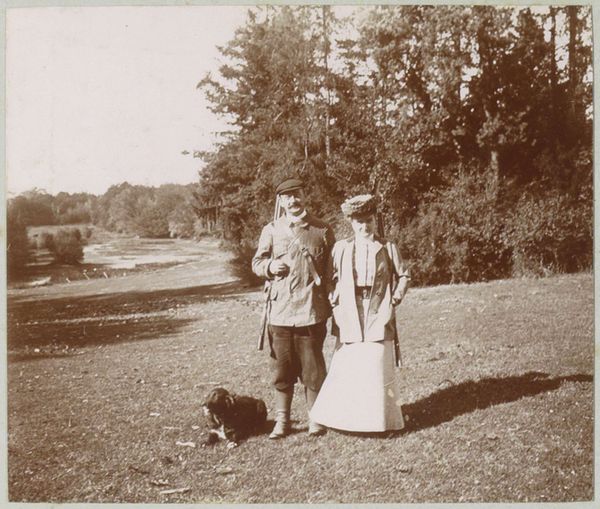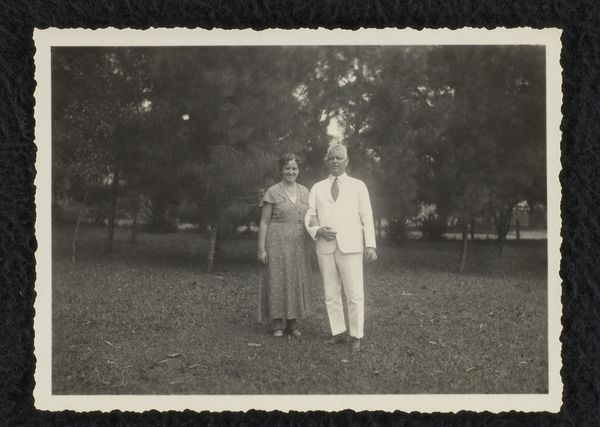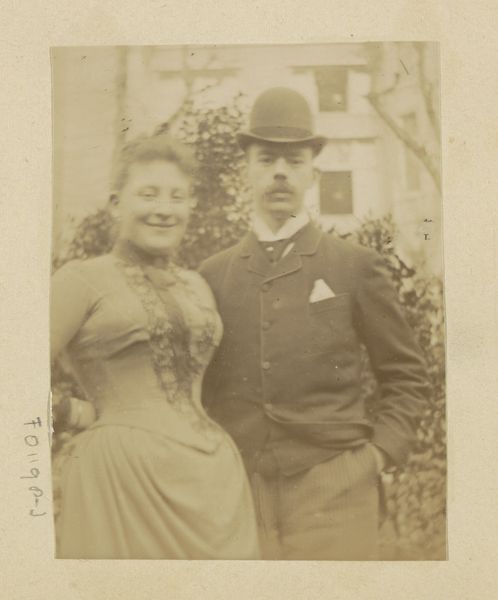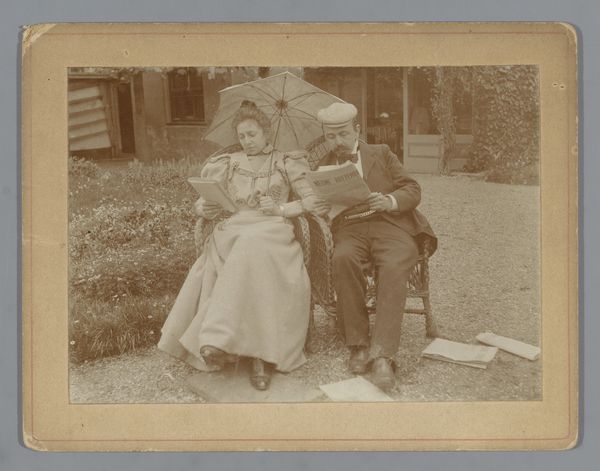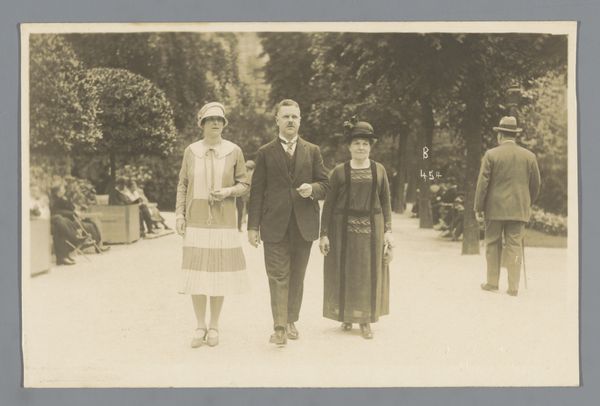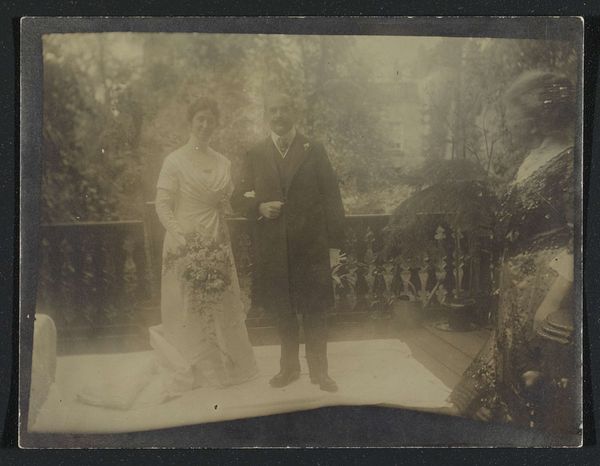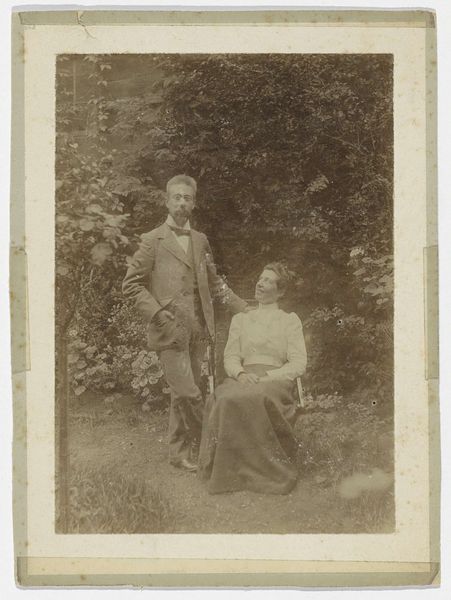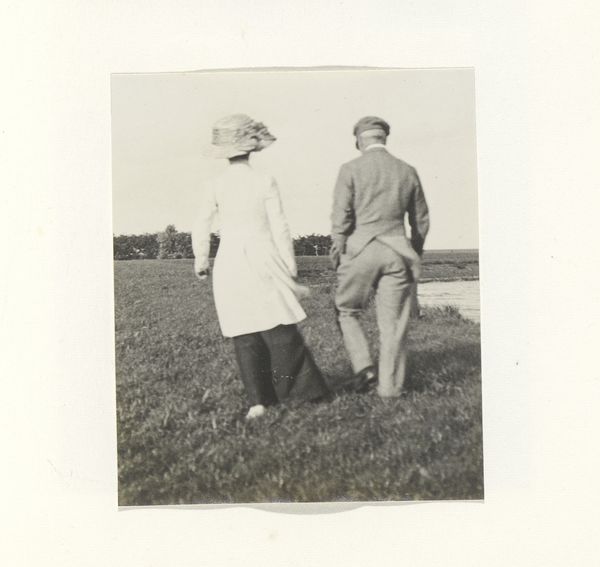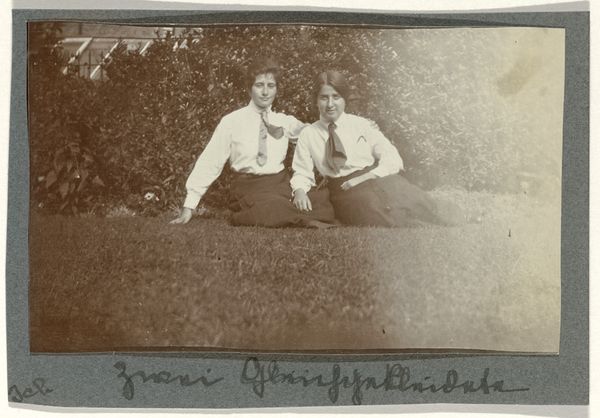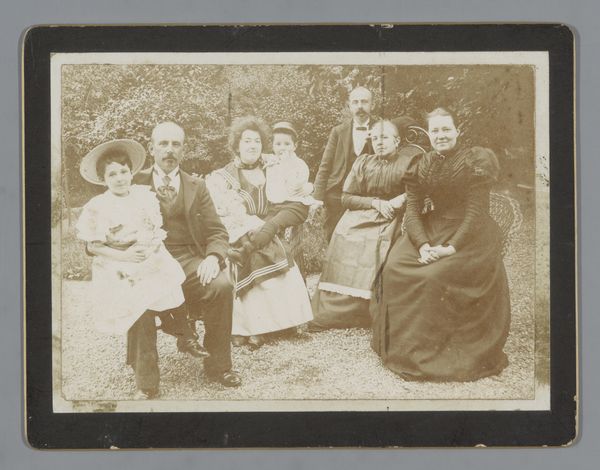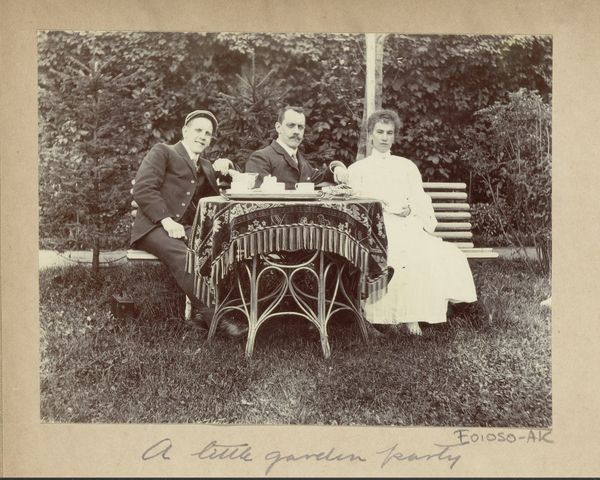
Groepsportret in de tuin van de familie Van Santen te Baarn before 1894
0:00
0:00
photography
#
portrait
#
pictorialism
#
photography
#
group-portraits
#
genre-painting
Dimensions: height 80 mm, width 108 mm
Copyright: Rijks Museum: Open Domain
Curator: Before us, we have a photograph titled "Groepsportret in de tuin van de familie Van Santen te Baarn," which translates to "Group Portrait in the Garden of the Van Santen Family in Baarn." It was taken before 1894 by Hendrik Herman van den Berg. Editor: There’s an interesting stillness to it. Even the light has a muted quality. I wonder about the societal norms reflected here; there is formality, even amongst what appears to be leisure time spent within the family's garden. Curator: Pictorialism really aimed for that mood. It's interesting how the family poses amidst the rose bushes and foliage. Notice the somewhat idealized depiction. Van den Berg uses the soft focus to evoke a sense of nostalgia and timelessness, almost a classical tableau. Editor: Absolutely. But looking closer, I think about representation in a broader sense. What did it mean for a family like the Van Santens to visually cement their place in society through such portraits? Their garments denote a sense of middle-class order. I question whose stories don't get to be archived in such a delicate fashion. Curator: That's a critical perspective. I'm also drawn to the use of genre painting to elevate such scenes, bringing themes of familial closeness into view. Think about the symbolism of the garden itself: a cultivated, protected space that speaks to status and controlled prosperity. And how does that influence the expressions the figures adopt, from the sitter with his canine, to the pair who pose vertically and at ease behind him? Editor: Indeed, the controlled setting reflects the societal expectations. It also underscores how visual representation becomes a tool to both reveal and conceal truths about the people represented, perhaps constructing a selective historical memory for posterity. There is power and even authority enacted through something that, at face value, seems relatively unassuming. Curator: Well, engaging with this photographic approach opens up an entirely different experience now that we can apply an intersectional awareness that contextualizes even the simplest scenes. It serves as a strong example of pictorialism, of the domestic realm—but, perhaps more meaningfully now, a document speaking of more. Editor: Yes, I agree. When we bring theory and an inclusive narrative to historical works like this, we create room to discover broader conversations regarding representation, authority, and society itself, and begin seeing what previously remained hidden.
Comments
No comments
Be the first to comment and join the conversation on the ultimate creative platform.
